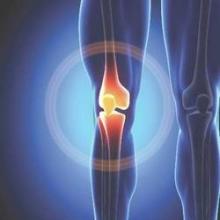Mesenchymal stem cell transplants appeared to regenerate cartilage and improve clinical outcomes after 2 years in patients with knee osteoarthritis in a small South Korean study.
There were 24 treated knees among the 11 men and 9 women in the study, whose average age was 58 years and mean body mass index was 26.6 kg/m2.
At baseline, 21 lesions (87.5%) were grade 2 or 3 on the MRI Osteoarthritis Knee Score scale for size of cartilage-loss area, and 23 lesions (95.9%) were grade 2 or 3 for percentage of full-thickness cartilage loss. A grade of 2-3 indicates moderate to severe disease.
At MRI follow-up 2 years after transplant, only five lesions (20.8%) were grade 2 or 3 for cartilage-loss area and five were grade 2 or 3 for full-thickness cartilage loss, reported Dr. Yong Sang Kim of the Yonsei Sarang Hospital in Seoul and his associates (Osteoarthritis Cartilage. 2015. doi: 10.1016/j.joca.2015.08.009).
There were clinical improvements, too. At baseline, the mean International Knee Documentation Committee score improved from 38.7 at baseline to 67.3 at follow-up and the mean Tegner activity scale score improved from 2.5 at baseline to 3.9 at follow-up. The results were all statistically significant and independent of age, sex, body mass index, and size and location of the cartilage lesions.
“This study showed encouraging clinical outcomes of [mesenchymal stem cell] implantation with fibrin glue as a scaffold in OA knees,” and it adds to the growing body of literature supporting mesenchymal stem cells (MSCs) in osteoarthritis. “MSC implantation with fibrin glue as a scaffold seems to be effective for repairing cartilage lesions in OA knees,” the investigators wrote.
The cells were derived from fat liposuctioned from the subjects’ buttocks and delivered to their damaged knees in a fibrinogen-thrombin gel under arthroscopic guidance. The cartilage lesions, which were most often on the medial femoral condyle, were debrided beforehand. Patients’ knees were immobilized for 2 weeks after transplant. Weight bearing was allowed at 4 weeks, and sports at 3 months.
It’s not fully known why MSCs help knee OA. Perhaps they release factors that stimulate cartilage formation by resident chondrocytes or other cells in the joint, and inhibit joint inflammation. The investigators derived their cells from fat – instead of bone marrow – because stem cells from fat are easier to get, easy to purify, and may be more chondrogenic. Fat is also richer in stem cells than marrow.
The next step is to identify predictors of good outcomes. “Patient characteristics or cartilage lesion variables may serve as important selection criteria for stem cell–based repair strategies,” Dr. Kim and his associates said.
The researchers had no disclosures.

